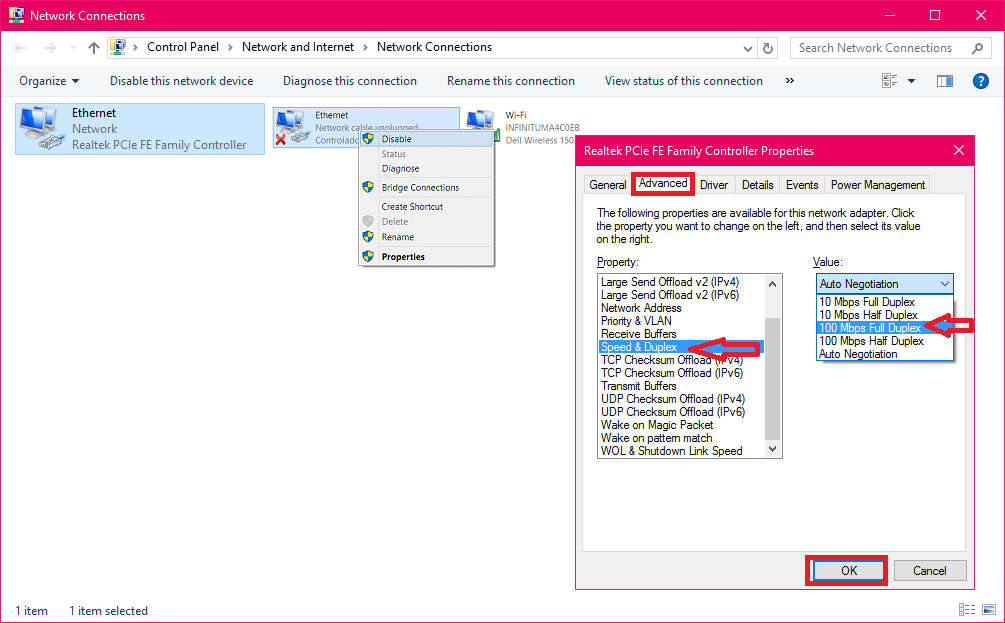

The only other thing to be sure of is that the guest operating system running in the VM has the default gateway set for its networking.
#VIRTUALBOX NETWORK CABLE UNPLUGGED MAC#
Once you have set that route up, any traffic which is destined for your Host Only network will first go to the Airport, which will respond with "Actually, you don't want to talk to me, you want to talk to 192.168.1.200" and the traffic will redirect to your Mac - which in turn will pass it on to the Host Only network.

Netmask: 255.255.255.0 Netmask of the Host Only Network

Replace the numbers with your actual IP addresses and network masks): Network: 10.0.0.0 Network address of the Host Only network The route you need to set up will be using something like the folowing settings (from the example above. This is where having a static address on your Mac is essential. When you find it you need to set up a route for the Host Only network through your Mac. It may be labelled as such, or as Routing Table or something similar. You are looking for a setting where you can specify Static Routes. Now, I haven't used an Airport, so I can't tell you where to look for the settings you need to change, but the facility will be there somewhere. You don't have to tell all the hosts on the network about it, only the one common point of call for all devices - the default gateway - in this case the Airport. But how do we tell the rest of the network about this Host Only network? At the moment only the Mac knows about it. Ok, so now network packets can get from the main network to the Host Only network. Once you have done that you can turn forwarding on without needing a reboot by typing (as root): sysctl -w .forwarding=1 On all other versions of OS/X, and indeed on 10.5 or below, you can modify /etc/nf and add: .forwarding=1

If you are on 10.5 or below take a look for the /etc/hostconfig file and find the line for IP Forwarding (I forget what it is exactly off hand) and set it to YES. Turning on IP forwarding on the Mac is a simple enough matter. You will need a static IP address on the Mac for this to work. What you are trying to achieve can be done very well without the need for any NAT whatsoever.īasically, the theory is, you create a separate network which is the host only network, turn on IP forwarding on the Mac, and set up a static route on the Airport. Double NAT is when Network Address Translation occurs twice in a network adding extra overhead to the packets transmitted through the network, and should be avoided whenever possible. While it should be possibble to use some form of NAT to link the host-only networking to the rest of the network, so called 'double NAT' is frowned upon. This is actually quite a simple thing to achieve, but does require a certain level of technical knowledge about networking and routing.


 0 kommentar(er)
0 kommentar(er)
